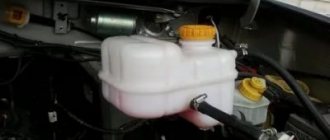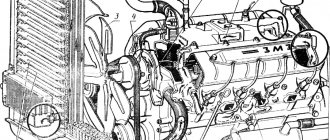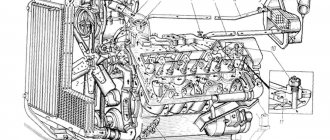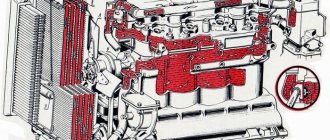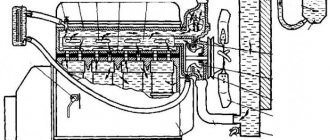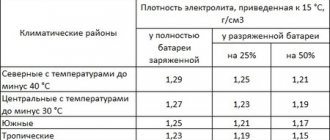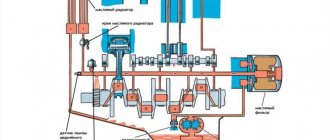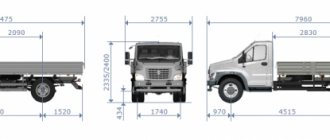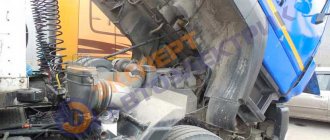The UAZ 469 all-terrain vehicle, which appeared in our country in the early 70s of the twentieth century, remained for a long time the best domestic SUV. Thanks to its high reliability, maintainability in field conditions and low price, this machine still remains the standard all-wheel drive vehicle for many.
In 1974, the car passed a serious test - the conquest of the Elbrus region. Having passed an altitude of about 4000 m above sea level, it became the only vehicle to overcome this height without the help of special equipment.
The disadvantages of the UAZ 469 are a tarpaulin awning instead of a roof and a weak stove. But they are more than compensated by the vehicle's cross-country ability.
In 1985, the car was renamed UAZ-3151. Modifications 31514 and 31514-010, equipped with spring suspension, also appeared on sale. In 2003, a more modern version was released, replacing “469” - “Hunter”. The total volume of their production in 2007 was 2 million copies. By this time, an anniversary modification of the car had been released - with a 2.7 liter engine and a power of 128 hp.
Let's look at how the cooling system of the UAZ 469 is designed, what is the principle of its operation, how much antifreeze it holds, and why the coolant can overheat.
General device
These cargo-passenger cars with carriage layout use closed-type liquid cooling. The coolant circulates in the system forcibly under the influence of a centrifugal pump. The manufacturer recommends using domestic Tosol as coolant. However, in emergency cases, you can fill the cooling system of the UAZ “Loaf” with ordinary water. The volume, including not only the cooling system circuits, but also the heater, on most models ranges from 13.2 to 15.3 liters.
"On the shelves"
Let's consider the components of the “loaf” cooling system.
It consists of a wide range of spare parts:
- A radiator containing coolant , the main function of which is to supply heat to the atmosphere. Most often made of copper or aluminum, there are also three types - tubular, honeycomb and plate. The last option is the most common. Each of the listed models is designed in a special way.
- Oil cooler , which cools the oil with air. This unit is used as an addition.
- Grille , which protects the radiator itself from temperature disturbances and foreign parts.
- Heater radiator , which is very similar to the first option, but it is installed in the car interior.
Technical characteristics of UAZ-390945 “Farmer”
The developers of the first UAZ models were faced with the task of creating a “workhorse” for farmers, hunters, builders, utilities and forestry. The car received all-wheel drive, a rigid suspension and a roomy body with folding sides on three sides.
Truck UAZ 390945
Load capacity
Characteristics:
- load capacity - 1075 kg;
- curb weight - 1995 kg;
- total weight – 3070 kg.
Car dimensions:
- length - 4847 mm;
- width – 1974 mm;
- height – 2355 mm;
- wheelbase – 2550 mm;
- ground clearance - 220 mm.
Body size:
- length - 2022 mm;
- width - 1794 mm (internal size - 1870 mm);
- side height - 400 mm;
- awning height - 1400 mm.
Fuel consumption rates
Fuel consumption:
- consumption rate - 13.2 l / 100 km combined cycle;
- at a speed of 90 km/h - 15.4 l;
- off-road - up to 20 liters;
- fuel - gasoline not lower than A-92;
- tank volume – 56 l (you can install a second tank of 30 l).
Engine capacity - 2.693 liters. Power - 128 hp. With. Gearbox - manual, 5 steps.
Driver's cabin
List of internal combustion engine modifications
For various tasks, several modifications of UMP motors come out of the factory:
- 417.10 - considered the basic version, compression ratio 7, runs on A-76 gasoline, meets Euro-1 standards, characteristics 172 Nm and 92 hp. With.;
- 4175.10 - adapted for GAZ Gazelle clutch, compression ratio 8.2, therefore AI-92 fuel is used, complies with Euro-3, characteristics 182.5 Nm and 98 hp. With.;
- 4178.10-03 – installation of engines only on the old UAZ model range, compression ratio 7, Euro-1, characteristics 171 Nm and 92 hp. s., power steering;
- 4178.10-01 - only for the old UAZ model range, compression ratio 7, Euro-1, performance 171 Nm and 92 hp. pp., 254 mm lever clutch;
- 4178.10-52 - exclusively for early UAZ models, compression ratio 8.2, Euro-1, performance 180 Nm and 98 hp. pp., 240 mm diaphragm clutch;
- 4178.10-10 - after the release of the UMZ 421 version, the cylinder head from this engine is used, in which the valve diameter is increased to 39 mm, the pump is shifted to the block, and instead of a packing it has a normal oil seal;
- 4179.10 - recommended for special vehicles of the Ministry of Defense, Euro-1, compression ratio 7.0, characteristics 171.6 Nm and 92 hp. pp., starting heater, diaphragm or lever clutch.
The last two versions use additional and improved attachments, and the latest model for military UAZs uses an original factory-boosted cylinder head.
Operating principle
Cooling is based on the principle of heat extraction by liquid. Afterwards, the substance moves into a device (radiator), where it transfers the accumulated heat to the environment through air, while cooling. Then the working fluid returns to the heated elements and the process repeats. The cooling system of the ZMZ 409, UAZ 402 (421) engines operates on this principle.
When examining the cylinder, it is clear that the product consists of an internal and external part. The gap between these parts is called a jacket; antifreeze moves through this space. You can also read about Razdatka UAZ 469.
Option under index 390994
The body dimensions of the UAZ “Farmer” of this configuration are identical to the basic modification. The all-metal cabin is placed on a chassis with a base of 2.3 meters. The cabin seats seven passengers with a driver. The cargo part is separated by a bulkhead, the carrying capacity is 1 ton. The power unit is the UMZ-4213 engine with a volume of 2.9 liters and a power of 106 hp.
The truck's transmission is a four-speed gearbox with a power take-off. Some variations used a front axle with switchable drive. The brake system consists of a main drum element and a parking brake. The steering structure is made according to the following scheme: a worm gear and a double-ridge roller without a power amplifier.
water pump
The water pump on the UAZ Bukhanka car is mechanically driven, centrifugal type. The purpose of the device is to force antifreeze to move through the pipes and voids of the engine. The pump transports the fluid flow to the radiator, where the substance is cooled and back to the cylinders. Malfunctions in the pump will lead to overheating of the motor and serious damage, so the unit requires maintenance. The pump elements are as follows: aluminum frame, impeller, seal. The impeller, rotating, creates a centrifugal force that throws the liquid towards the walls of the frame. The job of the seal is to contain the coolant and prevent leakage at the joint.
Pump for UAZ-409:
Cooling jacket and tubes
The space between the double walls of the combustion chambers of the UAZ car engine is located inside the power plant and the core head. Visually, it represents recesses designed to move fluid and remove heat during engine operation. Antifreeze is transported to the heat exchanger and back through pipes. Malfunctions in the elements lead to overheating of the motor and loss of operation of the unit.
Long-term operation of the engine clogs the cavities and impairs the passage of antifreeze. This is typical when the engine is running on water, since the substance is prone to scale formation and, consequently, a reduction in the cross-section of the holes and corrosion. Destruction of the cylinder walls leads to leaks and liquid entering the cylinder, and this is a major repair of the unit. In order to prevent breakdowns, it is recommended to operate the engine with antifreeze that is neutral to the engine materials, and replace the substance within the prescribed time frame.
Thermostat
The thermostat with a solid filler is placed in the outlet pipe. The thermostat valve begins to open at a coolant temperature of 70±2°C, and at a temperature of 83±2°C it opens completely. The thermostat automatically maintains the required engine coolant temperature by turning the radiator off or on.
In cold weather in winter, especially at low engine loads, in order to avoid freezing the radiator, you should always keep the shutters closed and only open them slightly when the coolant temperature increases to 90°C.
Photo 4: Operation of the UAZ 469 thermostat (Source: Yandex.Pictures)
How the UAZ-469 thermostat works: A - the thermostat valve is closed; B - thermostat valve is open.
The UAZ 469 all-terrain vehicle, which appeared in our country in the early 70s of the twentieth century, remained for a long time the best domestic SUV. Thanks to its high reliability, maintainability in field conditions and low price, this machine still remains the standard all-wheel drive vehicle for many.
In 1974, the car passed a serious test - the conquest of the Elbrus region. Having passed an altitude of about 4000 m above sea level, it became the only vehicle to overcome this height without the help of special equipment.
The disadvantages of the UAZ 469 are a tarpaulin awning instead of a roof and a weak stove. But they are more than compensated by the vehicle's cross-country ability.
In 1985, the car was renamed UAZ-3151. Modifications 31514 and 31514-010, equipped with spring suspension, also appeared on sale. In 2003, a more modern version was released, replacing “469” - “Hunter”. The total volume of their production in 2007 was 2 million copies. By this time, an anniversary modification of the car had been released - with a 2.7 liter engine and a power of 128 hp.
Let's look at how the cooling system of the UAZ 469 is designed, what is the principle of its operation, how much antifreeze it holds, and why the coolant can overheat.
The design of the UAZ 469 cooling system
The UAZ 469 radiator is designed to reduce the coolant temperature. It is installed in the front of the car immediately behind the protective decorative grille.
A flow of oncoming air blows across the radiator and cools the antifreeze circulating through it. The second most important function of the radiator is to protect the engine from overheating.
The total capacity of the UAZ 469 radiator is 6 liters. His weight is 9.8 kilograms.
The UAZ 469 is characterized by a closed cooling system with forced circulation of liquid. It is filled with soft fresh water with a small percentage of salts or a special liquid. During the cold season, antifreeze is poured into the system.
At temperatures down to – 40 °C, the UAZ 469 cooling system is filled with grade 40 antifreeze, and at lower temperatures - grade 65.
Engine thermoregulation is maintained using shutters and a radiator insulation valve.
To monitor the coolant temperature, there is a sensor in the water pump bracket and an electrical indicator on the instrument panel. If the coolant temperature rises to +106…109 °C, the lamp on the panel lights up.
Operating principle
When the engine is cold, the thermostat is closed and coolant does not circulate through the lines and pipes. When the power unit starts, the pump pushes antifreeze into a small circle - through the water jacket and the pump.
When the coolant temperature reaches +70 °C, the thermostat located in the radiator outlet pipe opens automatically. The coolant rushes from the water jacket into the radiator and begins to flow in a large circle. At the same time, it is additionally cooled by the counter flow of air and a fan installed in front of the radiator.
This happens in the summer heat. In winter, the thermostat may not open even when the car is used around the clock. The reason is that the ambient temperature does not allow the antifreeze to heat above +60 °C (before normal engine operation).
Reasons for increasing coolant temperature
The warning lamp sensor on the UAZ 469 is installed in the upper radiator tank. When the signal is triggered, the cause of coolant overheating must be immediately eliminated.
The forced cooling system of the UAZ 469 does not work by gravity - the coolant is pushed by a water pump or water pump.
The pump is secured by a bracket to the internal combustion engine. It is brought into operating mode using a tension belt. The belt is stretched from the crankshaft pulley to the water pump pulley. When the engine is started, the pump moves liquid through the cooling system.
The coolant temperature may increase due to:
- Radiator coolant level too low
- Low fan belt tension
- Long-term operation of the vehicle with the “blinds” lowered and the radiator insulation valve closed
UAZ-469 car - characteristics, design, repair
Sorry, the page you requested was not found. Why?
Possible options:
The link you came from is incorrect The path or page name in the address bar is incorrect The page has been deleted or renamed, but still exists in the search engine index (browser bookmarks)
- Technical characteristics of UAZ-469, UAZ-469B Engine characteristics (41416, 414) UAZ-469, UAZ-469B Engine UAZ-469, UAZ-469B Transmission UAZ-469, UAZ-469B Chassis, suspension, control systems of UAZ-469, UAZ-469B Electrical equipment of UAZ-469, UAZ-469B Body of UAZ-469, UAZ-469B Adjustment data of UAZ-469, UAZ-469B Filling capacity of UAZ-469, UAZ-469B
- Controls of UAZ-469
- Preparing for work UAZ-469
- Engine mount UAZ-469
- Crank mechanism of the UAZ-469 engine
- Gas distribution mechanism of the UAZ-469 engine
- Lubrication system UAZ-469
- Engine crankcase ventilation system UAZ-469
- UAZ-469 engine power supply system K-129V carburetor Maintenance of the UAZ-469 engine power supply system
- Gas exhaust system of the UAZ-469 engine
- UAZ-469 engine cooling system
- Preheater for UAZ-469 engine
- UAZ-469 engine malfunctions
- UAZ-469 clutch UAZ-469 clutch control drive Possible malfunctions of the UAZ-469 clutch
- UAZ-469 gearbox Malfunctions of the UAZ-469 gearbox, shift mechanism
- Transfer case UAZ-469 Possible malfunctions of the transfer case UAZ-469
- UAZ-469 driveshaft Malfunctions of the UAZ-469 driveshaft Rear axle UAZ-469 Rear axle UAZ-469B Possible malfunctions of the rear axle UAZ-469B
- Front drive axle UAZ-469 Maintenance of the front axle UAZ-469
- UAZ-469 frame
- Suspension UAZ-469 Shock absorber UAZ-469 Wheels and tires UAZ-469 Possible malfunctions of wheels, tires and hubs UAZ-469
- Steering of UAZ-469
- UAZ-469 brakes Maintenance of UAZ-469 brakes Possible malfunctions of UAZ-469 service brakes UAZ-469 parking brake
- Electrics UAZ-469
- Generator UAZ-469
- Voltage regulator PP132
- Battery UAZ-469
- Ignition system of UAZ-469 Possible malfunctions of devices in the ignition system of UAZ-469
- Starter UAZ-469
- Lighting, light and sound alarm system UAZ-469 Sound signal UAZ-469
- Control and measuring instruments UAZ-469
- Tools and accessories UAZ-469
- UAZ-469 body UAZ-469 awning Ventilation of the UAZ-469 body Installation of sanitary stretchers in the UAZ-469 body
- Marking UAZ-469
- Maintenance of UAZ-469 First maintenance (TO-1) of UAZ-469 Lubrication of the UAZ-469 car
- Lubricants UAZ-469 and UAZ-469B
uazmiks.ru
Heat meter
Temperature meter UAZ Bukhanka, a part that displays information about the degree of heating on the instrument panel. Since forced ventilation of the radiator is installed on the motors used, the sensor does not control the switching on of the product.
If the motor has been rebuilt and an electric fan has been installed, the temperature sensor reads information about the temperature conditions. Afterwards, the information is transmitted to the control unit, which analyzes and regulates the degree of heating. The meter is installed on the engine thermostat; product malfunctions lead to overheating of the unit and breakdown.
Heating degree meter, motor ZMZ-406:
Design Features
In principle, the UMZ 417 engine is copied from the ZMZ 402 engine, but differences still exist:
- seating of the sleeves in the block with rubber rings instead of copper gaskets;
- the flywheel is larger in diameter;
- no fins at the beginning of release, then 4 stiffening ribs appeared;
- removable oil filter instead of a glass one;
- the cooling system diagram is reversed - both supply and intake of coolant from the cylinder head;
- weak fiber pump seal instead of the seal from the VAZ engine;
- The diameter of the valve plates has been reduced.
And the most important reason for the decrease in power of the UMZ 417 in comparison with the ZMZ 402 is the combined, non-bifurcated exhaust manifold.
Design features are:
- in-line engine layout and its longitudinal location relative to the vehicle’s trajectory;
- combustion chamber is small in size, dome configuration;
- improved cleaning of lubricant (full-flow circuit with replaceable filter);
- high service life from 150,000 km;
- short piston stroke and overhead valve arrangement.
To carry out major repairs, you do not need to visit a service station; all operations can be carried out on your own in the garage. For this purpose, the user manual contains both a description of the parameters and step-by-step photos.
How to flush the cooling system of a UAZ 469
After long-term operation of the engine, scale, salt deposits, stone, paraffins, and contaminated fluid products accumulate inside the water jacket. The driver asks the question: how to flush the UAZ 469 engine cooling system? There are several simple ways to flush the cooling system.
Many motorists recommend making a solution of citric acid and distilled water in a proportion of 100 grams per bucket of water. There are good professional washes Lavr and Tiret. How to use - you need to look at the packaging of these products.
Expansion tank
First of all, the expansion tank stores a supply of antifreeze. A certain volume of fluid must always be in reserve to maintain normal engine operation. In addition, vapors and gas are released into the tank, which accumulates in the system during operation. The expander is connected to the atmosphere by a valve installed in the lid. The valve is configured in such a way that there is always excess pressure in the system. This allows the engine to operate at high temperatures, but without the antifreeze boiling. Excess pressure is released from the valves into the atmosphere.
Expansion tank:
Installation of the NAMI-4 stove on a UAZ
There are several ways to improve the microclimate in the UAZ cabin: some decide to adjust the air intake damper, others simply install plastic nostrils on the original air intake. But most take the path of a radical solution to the problem: installing a more efficient and economical heater.
Such a device is the NAMI-4 heater, which, when installed on a UAZ, requires minimal modification compared to all other devices. True, this pleasure is not cheap - from 10 thousand rubles, but if you are used to driving in comfortable conditions, then such costs will not scare you.
The kit includes:
- The heater itself, along with the already installed tap and wires for controlling the modes in the river;
- corrugated pipe;
- plastic edging installed at the bottom of the bulkhead;
- consumables (metal plates, screws);
- heater installation instructions.
Before starting work, it is advisable to check the battery and its tightness, whether the fan motor is working, how well the heat exchanger dampers open/close.
Also make sure that the impeller blades are not stuck to the housing - if so, sharpen the tips of the blades with a file to avoid annoying whistling.
Algorithm for assembling the NAMI-4 heater on a UAZ:
- The first step when removing the heater in every car is to drain the coolant. On a UAZ, for this you need to remove the radiator cap by unscrewing three screws 10;
- Since it is not always possible to install a tank of sufficient capacity under the radiator, it is recommended to connect a hose of sufficient diameter to the tap - this way we minimize the loss of antifreeze. The spatial arrangement of the faucet cannot be called convenient - the rod with which it opens protrudes strongly and can pinch our drain hose, so you should make sure that there are no problems here;
- Unscrew the radiator filler cap, the surge tank cap and open the drain valve. Wait for the coolant to drain;
- Loosen the terminals on the connectors connected to the heater radiator, remove them (if they are stuck, this will take some time);
- To prevent spillage of small amounts of coolant remaining in the hoses, install an appropriately sized container;
- Remove the expansion tank with the tube (it will also contain some coolant);
- it's time to replace your old, rusty calipers with new ones;
- Disconnect the negative battery terminal;
- Repeat the same operation for the heater wiring harness and disconnect the heater ground wire that is bolted to the heater body;
- Loosen the nuts securing the heater body to the bracket (not necessarily all the way);
- Move the bracket to the side and carefully remove the heat exchanger;
- Install the NAMI-4 harness in the standard location, secure it with two side screws, making sure that the heat exchanger fits tightly without gaps. After making sure that nothing gets under the heater (such as an antenna wire), tighten the two nuts on the sides;
- Now you can put on the tips and tighten the clamps securely;
- close the coolant drain valve and at the same time open the heater valve;
- Pour antifreeze into the system (if it is heavily contaminated, it is not recommended to use it, otherwise the new heater will quickly become covered with the first layer of scale);
- Make sure there are no coolant leaks;
- in the reverse order of assembling the dashboard;
- checking the new heater during operation.
As a rule, glass fogging disappears after the device warms up. Due to a slightly modified design of the heater (taking into account the shortcomings of the standard heater), when the fan is turned off, the air flow decreases (due to the presence of a plastic casing in which moisture accumulates), but this disadvantage is more than compensated for already at the first speed of the fan, which works much more quieter than my own.
Now not only the front passenger, but also the driver will feel equally comfortable, and you can more accurately control the flow of warm air in winter and cool air in summer.
We hope that the above information will be enough to make the right decision on which heater to install in the UAZ 3303 instead of the unattractive original one.
Cons of the cooling system
The standard cooling system of the UAZ 469 has some disadvantages. The manufacturer installs a plastic fan, which quickly melts. It should be replaced with a metal one. In addition, it is necessary to install a multi-blade impeller from a 405 engine. The viscous coupling must also be replaced.
Car enthusiasts often complain about the water pump. The liquid pump should be replaced with an imported analogue. The thermostat must also be replaced. This device needs to be changed to a more heat-intensive version, better than a foreign one.
Fan
The fan of the UAZ 469 car comes in two types - with constant rotation and with forced activation. The drive of the first is arranged through a belt drive from the crankshaft pulley. The second option is an electric fan and is started from a switch on the instrument panel, or through a relay when the need arises.
The fan creates additional cooling for the radiator, since it is located in front of it. In summer, when it is very hot, blowing the radiator with a counter flow of air is not enough. The fan is an additional source of cooling.
Draining fuel from UAZ Patriot
In rare cases, it happens when the owner of a Patriot needs to drain the fuel. The UAZ fuel system has its own design features, which makes it impossible to simply drain gasoline. However, this procedure can still be carried out.
In order to drain a certain amount of fuel, you only need to open the plug. Remember, the fuel tanks on the UAZ have rather curved pipelines that come from the so-called filler plugs, therefore, if you want to insert a regular hose through the plug in order to drain gasoline using the well-known old and proven method, you will not succeed. In general, it is simply impossible to drain fuel from one tank or another. This statement will discourage many, but everything is in order.
There is a method, however, it is not easy. First, you need to use a valve to relieve the pressure present in the ramp. Next, you need to remove the hose from the ramp itself and lower the remaining other end and secure, if necessary, in a previously stored container to drain the fuel. Then turn on the ignition; you need to monitor the filling of the container. Now that the required amount of fuel has been drained, all that remains is to simply turn off the ignition. The most important thing is to strictly follow the instructions, and then everything will work out. With this procedure, it is not necessary to start the engine, since the gasoline pump starts working when the ignition is turned on. This is the only way you can drain the fuel from the UAZ Patriot tank.
| See all advertisements in the archive |
Which stove to choose
This is one of the main problems when performing this type of tuning. The fact is that in the UAZ there is quite a lot of space for various manipulations, so, for example, if the radiator you like from a foreign car does not fit on the UAZ due to a mismatch in dimensions or methods of connecting the pipes, then the problem may not be solved at all. In other cars there are much fewer such possibilities due to the large compactness of the arrangement of components and parts in the engine compartment, as well as under the dashboard.
No Additional heater UAZ 469
Since the domestic auto industry is mainly focused on the products of the Volzhsky Automobile Plant, it is not surprising that many are trying to adapt the heater from VAZ. But there are some nuances. The stove from the classics is clearly not suitable here, the stove from Niva Chevrolet, while demonstrating good performance characteristics, is unacceptable due to the difference in the angles of the outlet nipples - it is almost impossible to put hoses on them. Therefore, the most realistic way to install a radiator on a UAZ with a VAZ is to use the Kalina radiator, although in this case a significant number of alterations will be required.
The stove from the Volga will not fit on the UAZ either, but many car servicemen install a rotor from the Volga instead of the original one, along with an additional engine and assure that there will be a real “Tashkent” in the cabin. Whether this is true or not, this option for upgrading the UAZ 469 stove can be called half-hearted, and not everyone will be happy with it.
The same can be said about installing a KAMAZ heater on a UAZ - too many alterations, but many modernizations of the original heater, replacing the original plug from the front heater with a KAMAZ one. In this case, you get pretty good exhaust with minimal effort, and at least complaints about windshield fogging are a thing of the past.
One of the most exotic options is installing a ZAZ heater on a UAZ. There are able-bodied people for whom an autonomous heater is an ideal option for many reasons (night fishing enthusiasts especially like it). Of course, a lot of improvements are required here, and there are many more shortcomings - from banal gas consumption to too noisy operation. However, the main problem is the unreliability of the design, especially when installed independently. And there are very few technically competent drivers capable of performing such tuning.
Most people are looking for a heater that can replace a standard heater with minimal modifications. In this regard, NAMI 4 has virtually no competitors.
